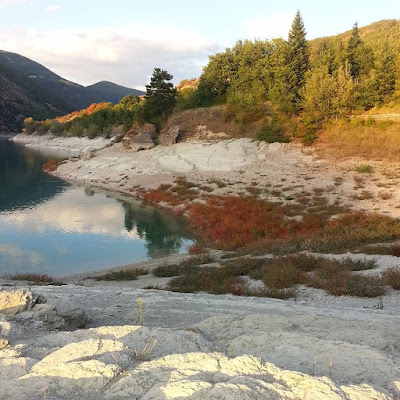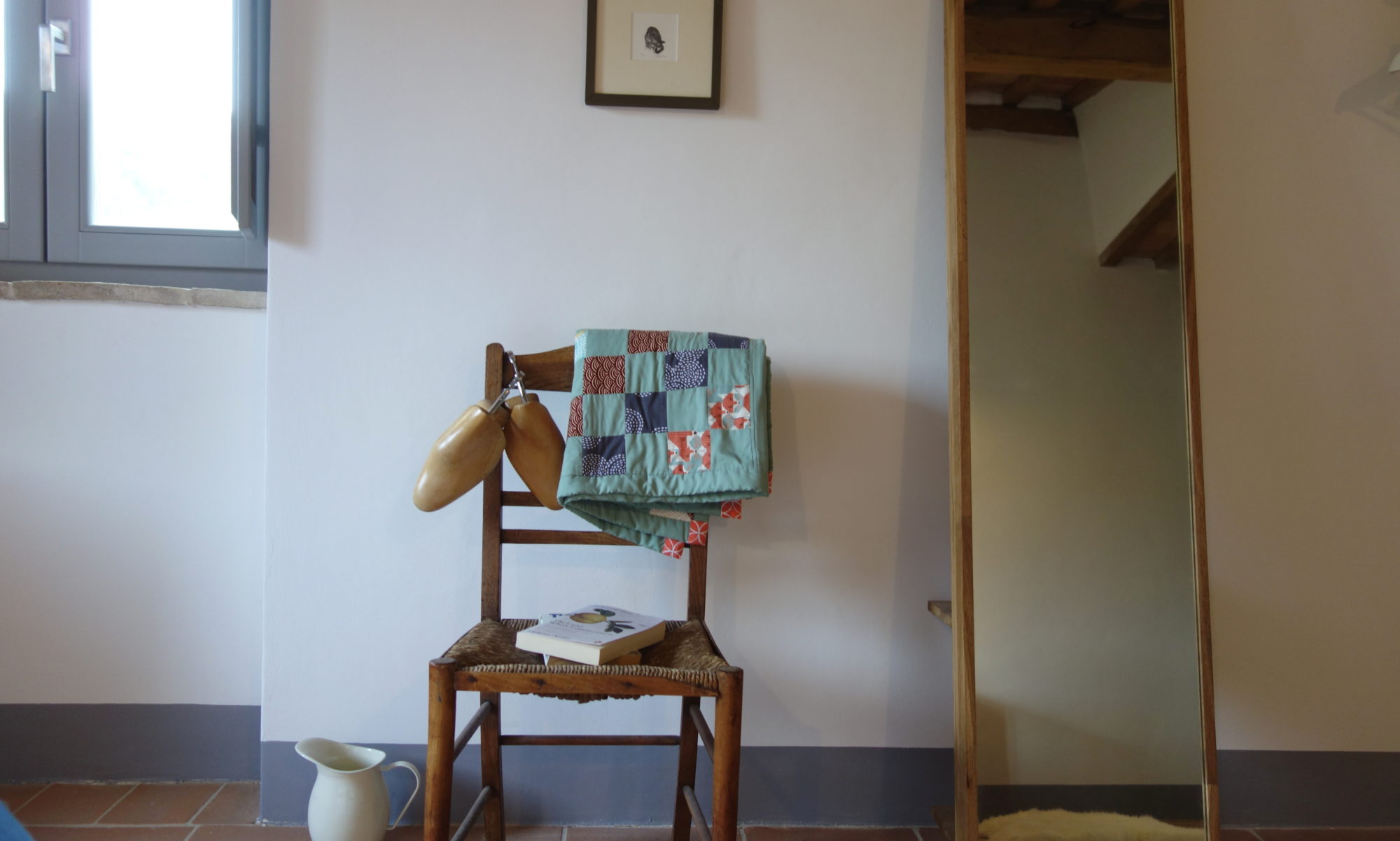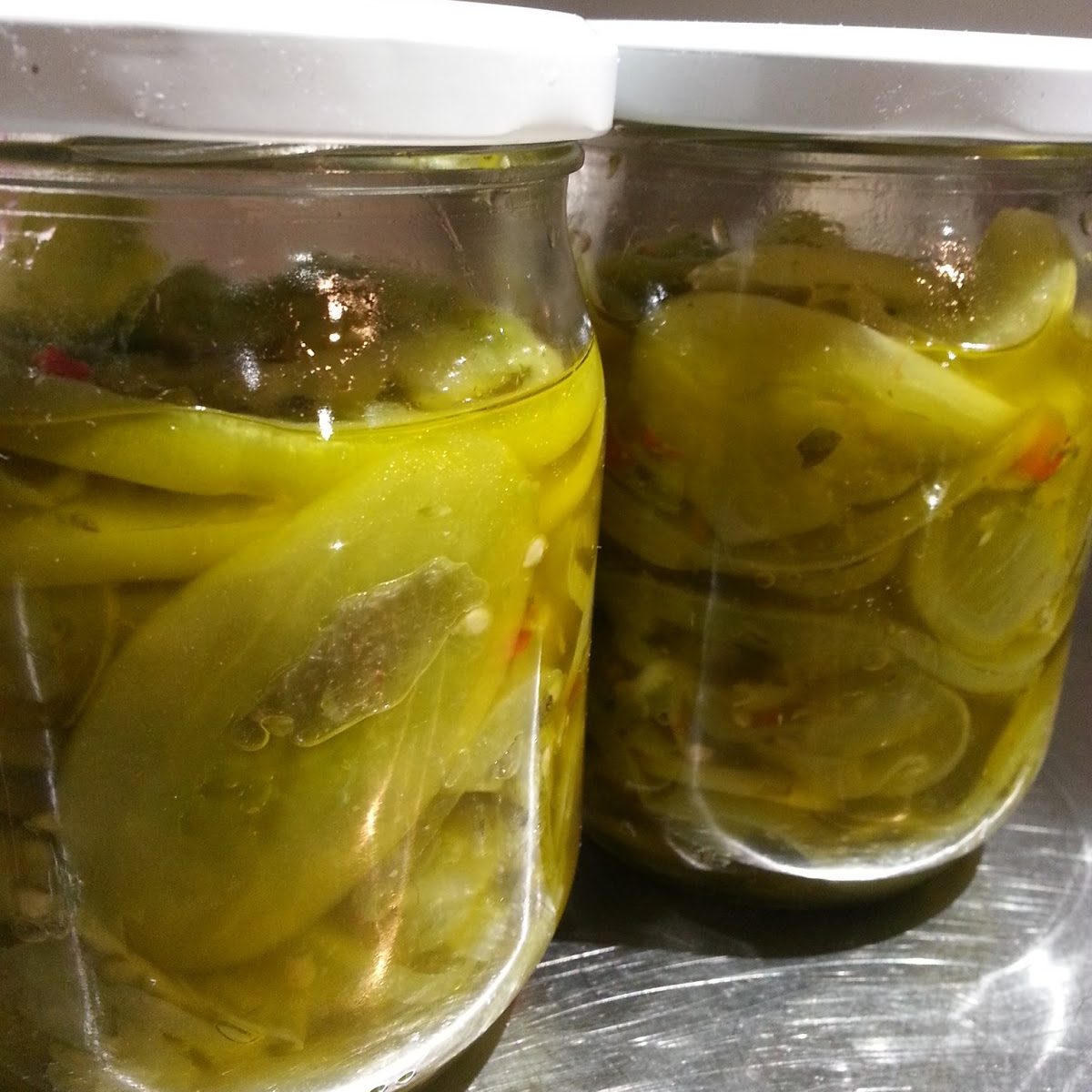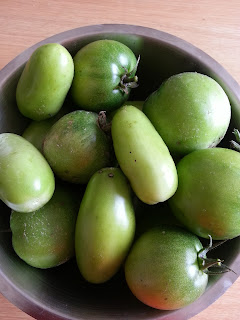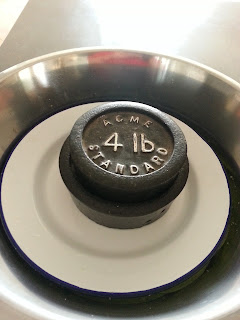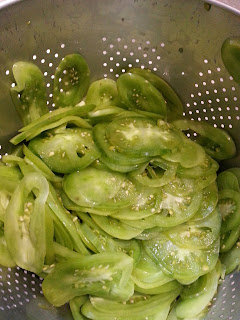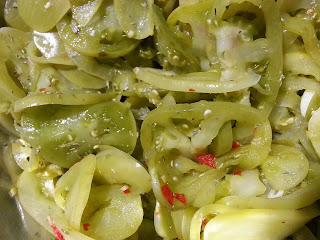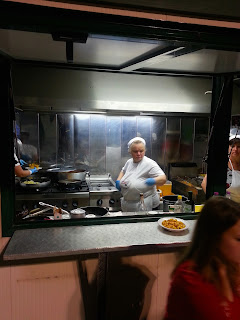We had phase one of the landscaping completed around the house last summer, but it wasn’t until late July that we had the first veggie bed in place, ready to be planted. Granted, it’s pretty late for a lot of summer vegetables, but with the heat of the summer I thought it was still worth a go.
No Italian orto is complete with a glut of tomatoes growing in it, so I planted a mix of San Marzano and Tonda di Mensa. Whilst some of them did ripe (and believe it or not, are still ripening even now), I have kilos of unripened green tomatoes just sitting there.
Not one to waste any food, ever (especially home-grown), after a chat with our lovely friend Giovanni, he passed on his wife’s recipe for preserved green tomatoes, along with a jar she’d made to sample. Upon opening them and taking the first mouthful, both Mike and I were hooked. They’d do well as an antipasto with fresh pecorino cheese, but I think they’d also work well with fatty meat like lamb chops, or even as a condiment to a good homemade burger.
I’ve already made one batch with 2kg of toms, and I’m now part-way through another slightly larger batch that will keep us happy throughout winter and early spring and do well for the odd Xmas gift for local friends.
It’s a dead simple recipe – all you need is a little time.
Green Tomatoes Preserved in Oil Recipe
Ingredients
2kg of green tomatoes
Fine salt
250ml white vinegar
250ml water
4-5 cloves of garlic
2-3 fresh red chillies
2-3 teaspoons of dried oregano
750ml olive oil, plus a little more for topping up the jars
Wash and finely slice the green tomatoes and layer them in a large bowl with a sprinkling of fine salt in between each layer.
Push them down with a large plate on top and something to weigh them down. Leave them in a cool, dark place for 24hrs.
Drain all of the bitter juice that’s been extracted from the toms – you can also squish them somewhat with your hands to get any excess juice out. Pat them dry with a clean tea towel and then pop them back into a large, clean bowl – once again in layers. Mix together the 250ml each of white vinegar and water and pour this over the tomatoes, ensuring they’re all covered. Pop the plate and weight back on them and leave them for another 24hrs.
Drain the tomatoes and, once again, squish any excess liquid out with your hands. Pop them into a clean, dry bowl and add in the chopped garlic, red chillies, oregano and the 750ml of olive oil. Mix thoroughly and let it sit at room temperature for approx. 3hrs so the flavours get to know one another.
Sterilise your jars (I filled 6 x 550ml jars, to give you an idea of volume), and then whilst the jars are still warm, pop the tomatoes in, packing them in tightly and leaving around 2-3cm at the top. Lastly, top up the tomatoes with a little extra olive oil so they’re fully covered by around 1cm and them pop the lid on tightly.
Store them either in the fridge or a cool/dark room or garage. They’re ready to eat 2 weeks after jarring, will keep for 6 months, but eat within a week or two once the jar is opened.

